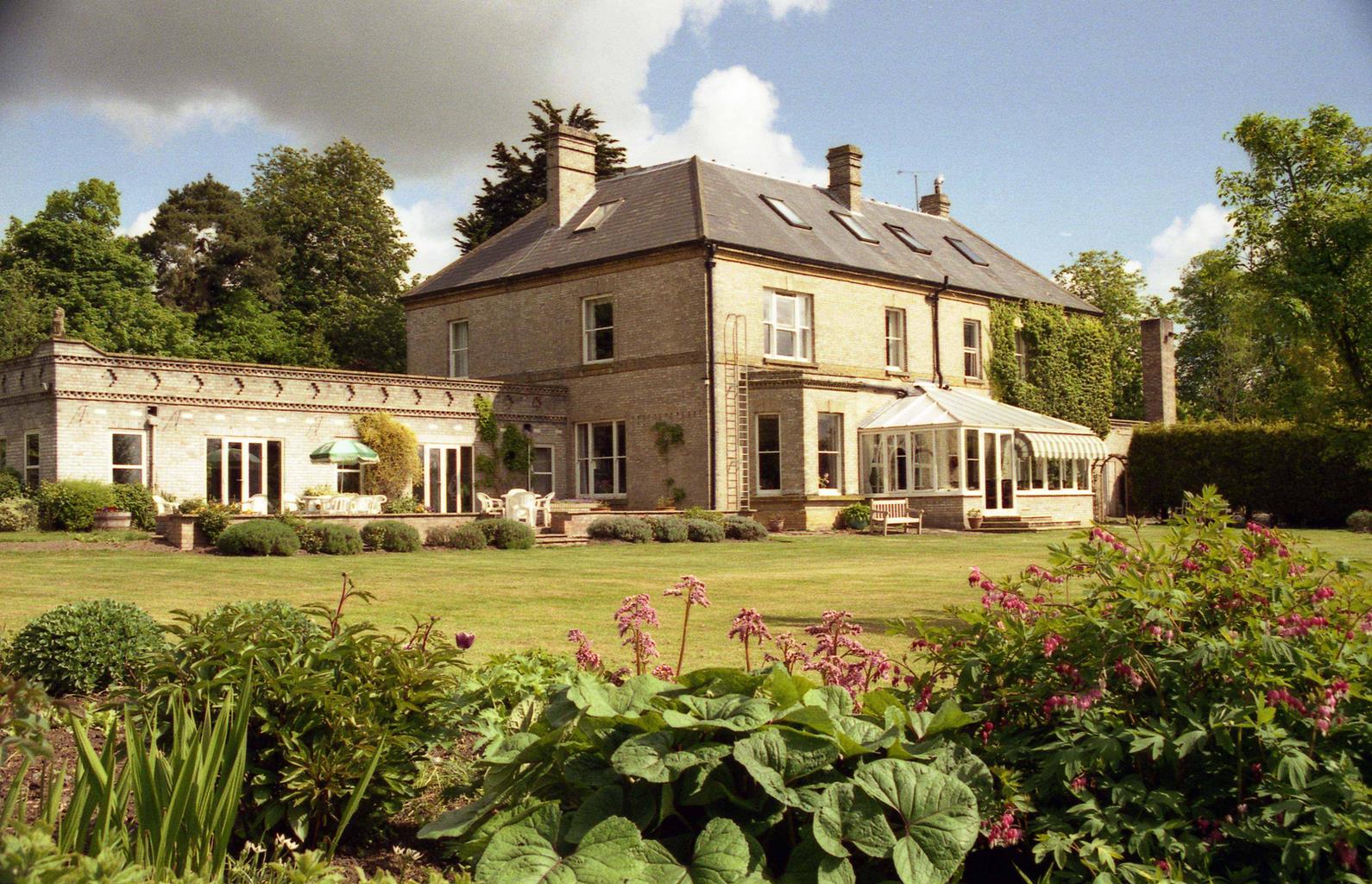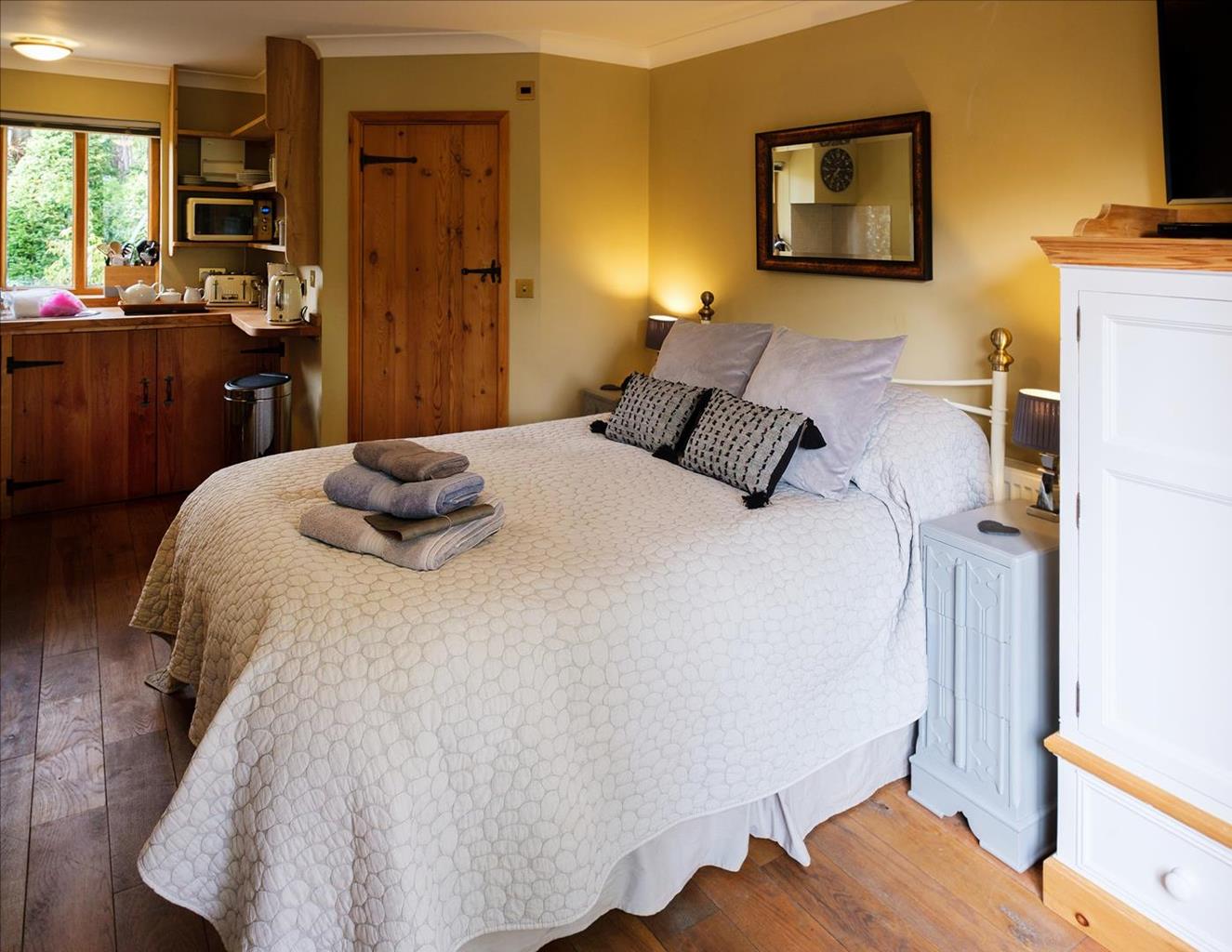Vicarage House is set in rural Norfolk with large gardens, a heated swimming pool, a tennis…
Hockham Heath and the Great Eastern Railway

6.25 miles (10.1kms)
About the walk
The forest between Stonebridge and Thompson is part of the much larger Thetford Forest, established across the Brecklands after the First World War as part of a national drive to secure the country's timber resource. The poor soils meant that the land was largely unproductive for farming and the new timber industry provided much needed employment for the area. The initial plantings used Scots pine, already locally established, but quickly shifted to Corsican pine, which proved more resistant to disease and pest. Pine still forms the mainstay of the forest, but oak, beech and other deciduous trees have been planted too. It remains a working forest, its character continually changing as maturing trees are felled and new plots are planted, brashed and thinned.
Peddars Way
Partway round, the route joins the Peddars Way, which has its origins in a Roman military road built in the first century to help control the insurgent Iceni. The name derives from the medieval itinerant traders or 'peddars' who travelled around the country on foot or with a packhorse, selling a range of household goods and necessities to remote villages and settlements.
Stanford Training Area
The area to the west forms part of the Stanford Training Area, used by the army since 1942 when several villages were evacuated to create a battle practice area. One of the settlements was mocked up to represent a German village and the range played a vital part in the build-up to the D-Day landings. Although it remains a military training ground, much of the land has been undisturbed for over 70 years and supports a wealth of plant and wildlife that has disappeared elsewhere.
Great Eastern Railway
The walk returns along a branch of the Great Eastern Railway that ran north from Thetford. It opened in 1869 and became known locally as the 'Crab and Winkle' on account of the number of holidaymakers who clambered aboard during the summer months for a day at the seaside. The line was much used during the war years too, serving RAF Watton, which was initially used by Bomber Command and then the US Air Force. The railway was taken up in 1965 and the stretch across Thompson Common onto Hockham Heath made into a footpath.
Cranberry Rough
The path passes through Cranberry Rough, originally a shallow lake left by retreating ice some 12,000 years ago. Rich in both fish and waterfowl, it attracted settlement around its shores when man returned north after the last ice age. As late as the 16th century there was still a sizeable body of open water, but by the 18th century, it had silted up to become a swamp. Attempts to drain it for grazing and reed production had only intermittent success and by the start of the last century it had become carr, a dense, waterlogged woodland. Designated an SSSI since 1961, it supports a wealth of plant and insect life as well as many birds.
Walk directions
Begin along a track past a barrier at the western end of the car park. Keep going for 0.25 mile (400m) to a yellow marker and there bear right on a green path. Branch right where it subsequently forks, shortly emerging onto a narrow lane.
Cross to a path diagonally opposite and carry on through the forest. The path curves around a large house set back in the trees, passing a junction and later an open glade over to the right. Go left at a fork by stock pens to meet a crossing path.
Keep ahead to a second junction just beyond and bear right. Walk on beside an area of young birch, shortly reaching another crosspath. Turn left and remain with it until you come out onto a broad forest road.
Turn right and branch right at an immediate fork, walking first through forest and then, after a while, at the edge of a clearing containing large poultry sheds. At the far end of the clearing, take a track on the right back into the forest. Meeting a T-junction, walk left and, at the end of that trail, turn right, eventually reaching the edge of the forest. Keep ahead past Heath Cottage and Crow's Farm to the end of a tall hedge on your left.
Leave sharp right past a wooden barrier along a forest path, which follows the line of the former railway track past the site of Crossing Keeper's Cottage. Later passing another wooden barrier, briefly join a gravel track, but as that then curves right into a field, keep ahead with the forest path. The trees thicken and the way shortly crosses a footbridge into the dark carr of Cranberry Rough. Reaching drier ground beyond, pass through a barrier to the junction passed on the outward route.
This time, stay ahead with the railway trail, shortly entering a long cutting. After 0.25mile (400m), watch for a path leaving up steps on the right. If you come to a bridge over the track, you've gone a little too far. Climb the steps to a narrow path and go left out to a lane. Turn left across the bridge, walking for 0.25 mile (400m) before reaching the second barriered path off on the right, passed close to the start of the walk. Follow it through the trees, reversing your outward route back to the car park.
Additional information
Forest paths and tracks
Forest and carr
Dogs under control
OS Explorer 229 Thetford Forest in the Brecks
Forest car park beside A1075 at Bragmere Pits
None on route
WALKING IN SAFETY
Read our tips to look after yourself and the environment when following this walk.
Find out more
Also in the area
About the area
Discover Norfolk
The North Norfolk Coast is designated an Area of Outstanding Natural Beauty and probably the finest of its kind in Europe. Here you’ll find a string of quaint villages and small towns – Holkham, Wells-next-the-Sea and Cley next the Sea are 21st-century favourites, while Sheringham and Cromer are classic examples of a good old-fashioned seaside resort where grand Victorian hotels look out to sea. Further round the coast you'll find Great Yarmouth, one of the most popular resorts in the UK and packed full of amusements, shops and seashore entertainment. And let's not forget Norwich, the region's only city.
Norfolk prides itself on its wealth of historic houses, the most famous being Sandringham, where Her Majesty the Queen and her family spend Christmas. Many of Norfolk’s towns have a particular charm and a strong sense of community. The quiet market towns of Fakenham and Swaffham are prime examples, as well as Thetford, with its popular museum focusing on the TV comedy series Dad’s Army which was filmed in the area.
Nearby stays
Restaurants and Pubs
Nearby experiences
Recommended things to do
Why choose Rated Trips?
Your trusted guide to rated places across the UK
The best coverage
Discover more than 15,000 professionally rated places to stay, eat and visit from across the UK and Ireland.
Quality assured
Choose a place to stay safe in the knowledge that it has been expertly assessed by trained assessors.
Plan your next trip
Search by location or the type of place you're visiting to find your next ideal holiday experience.
Travel inspiration
Read our articles, city guides and recommended things to do for inspiration. We're here to help you explore the UK.













